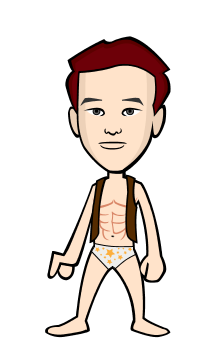
After so many months cooped up inside with your kids, the warmer days of spring and summer practically beg you to spend some time out in the sun’s rays. Whether you enjoy the beach, go to the park for a game of catch or prefer longer treks through nature preserves, enjoying the great outdoors is one of the best things about the changing of the seasons.
However, if you plan on spending a lot of time outdoors this spring and summer, and especially if you intend to be physically active in the hot sun, you need to be aware of how heat stroke and heat exhaustion can turn a 70-and-sunny day into one where you spend most of it at a CareWell urgent care center.

Don’t let too much sun ruin your outdoor fun this spring and summer.
STROKE IS WORSE THAN EXHAUSTION
Though you might hear the names in similar contexts this summer, the one thing you should walk away from your computer knowing is that when it comes to overexposure, you’d much prefer heat exhaustion to heat stroke.
However, both conditions are caused by the same basic processes. Your body’s primary way of maintaining its internal temperature is through evaporative cooling, or sweating. When you’ve had plenty to drink and your body is otherwise functioning properly, your sweat glands push heated liquid through your skin, and the atmosphere wicks away that heat in rapid fashion.
“HEAT EXHAUSTION SETS IN WHEN THE BODY’S TEMPERATURE RISES ABOVE ITS 98.6-DEGREE SET POINT.”
If you’re dehydrated and your body doesn’t have the moisture it needs to release heat as sweat, your body takes the brunt of the damage. That heat remains inside, and if the normal body temperature of 98.6 degrees Fahrenheit raises to less than 106 degrees, the condition is characterized as heat exhaustion.
What do the symptoms of heat exhaustion look like? The person in question might have clammy skin, a headache, mild nausea, dizziness and muscle cramps. His or her breathing might be irregular or shallow and the pulse may be fast as well.
While heat exhaustion might sound serious, the medical professionals at CareWell’s urgent care centers have the supplies and expertise to rapidly cool someone experiencing the condition. As long as heat stroke patients are removed from the sun and given plenty to drink in a timely fashion, long-term effects are very unlikely.
DON’T FOOL AROUND WITH HEAT STROKE
While the most damage heat exhaustion can do is ruin your day and possibly lay you up for another, heat stroke is a very serious condition that requires emergency care. While the two conditions share similarities, heat stroke can be life-threatening if not treated immediately. That’s why if you see someone in a hot environment who is not sweating and has reddened skin, and also has an internal temperature of more than 106 degrees Fahrenheit, you should seek emergency care as soon as possible.
Heat exhaustion is the far more common case, though. In fact, only 295 people died from heat-related illnesses in 2014, according to the U.S. Centers for Disease Control and Prevention. That’s why you should know where your nearest CareWell urgent care center is to help heat exhaustion victims before heat stroke has a chance to set in.
Po



